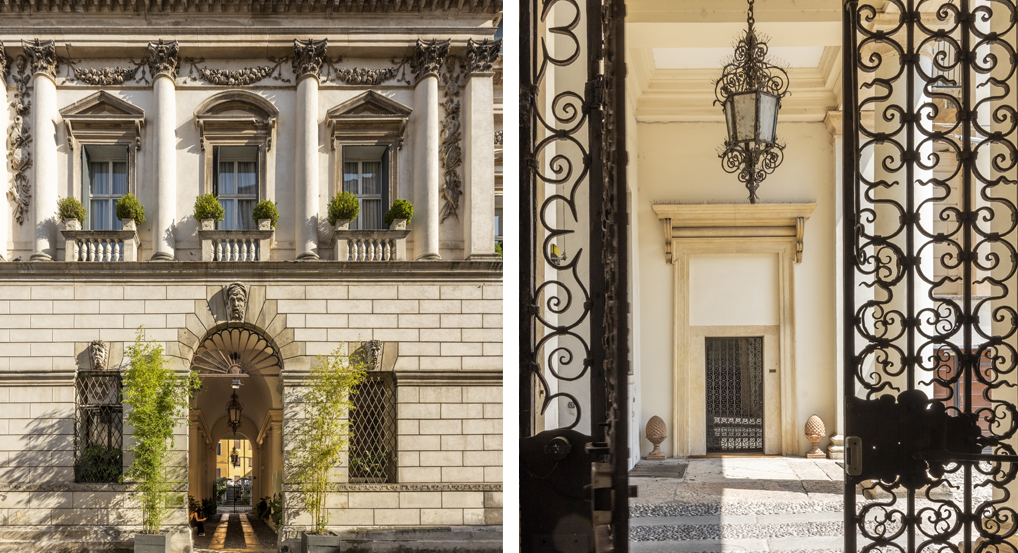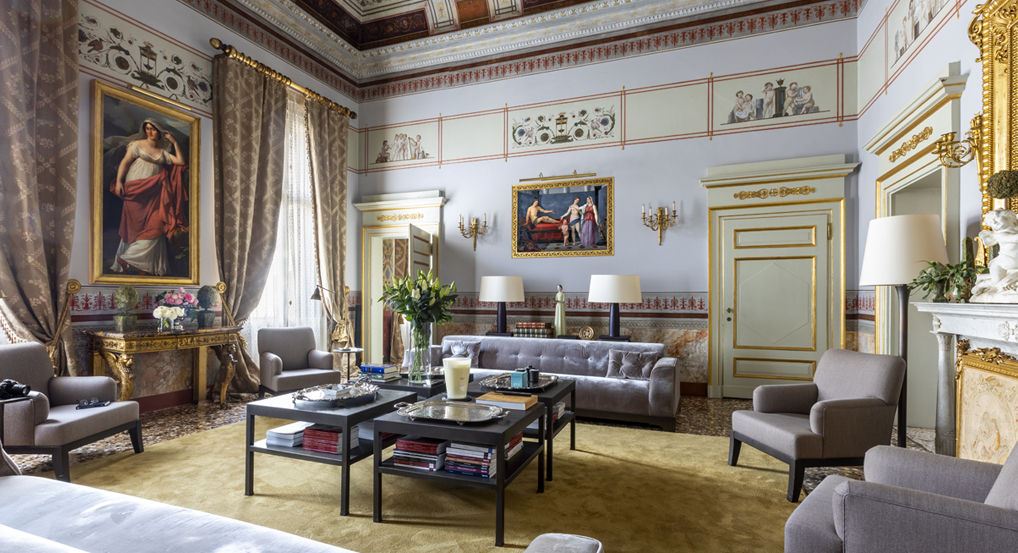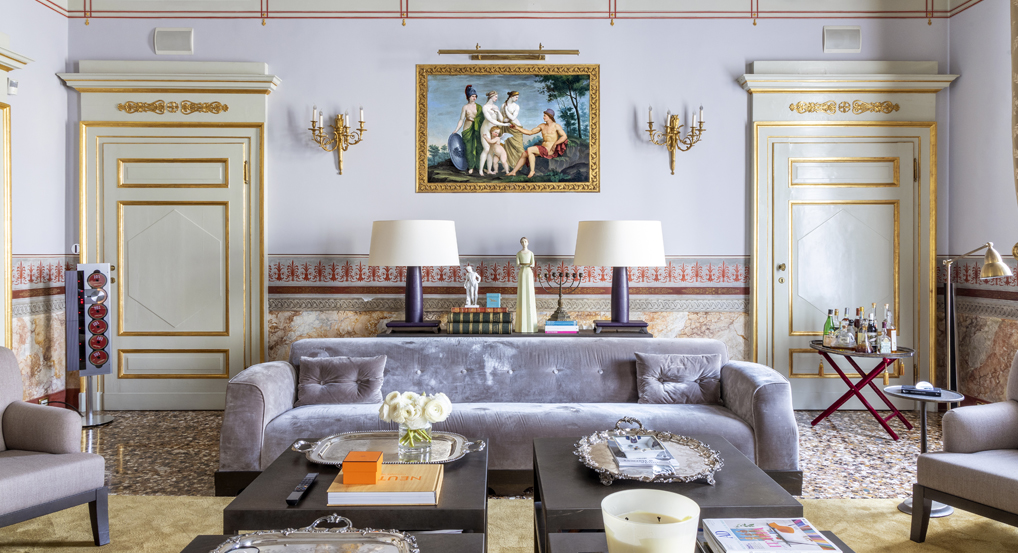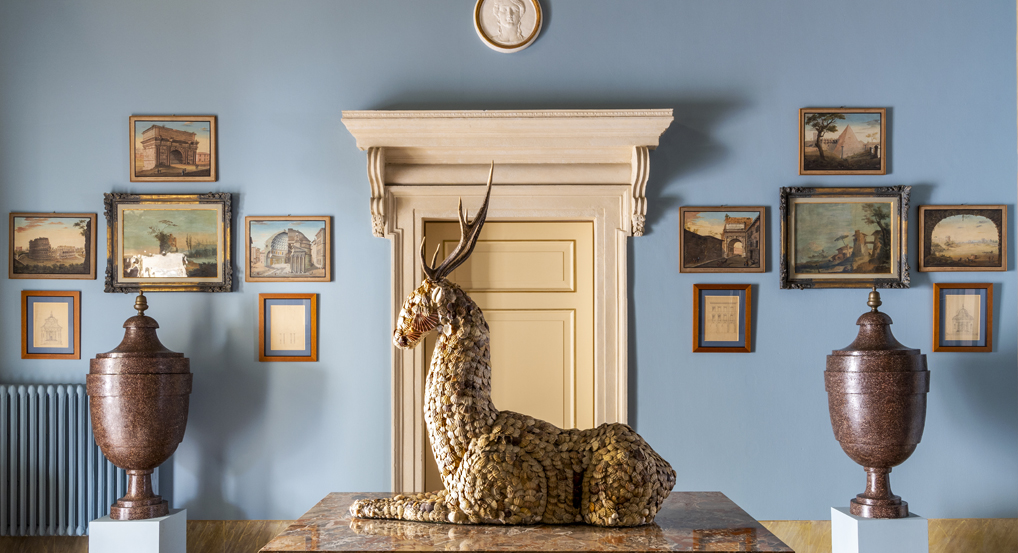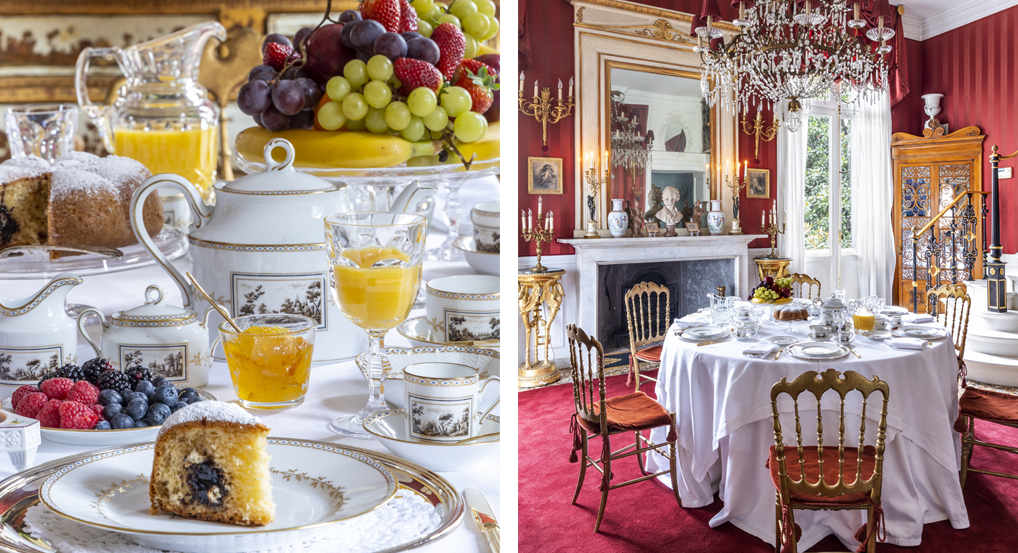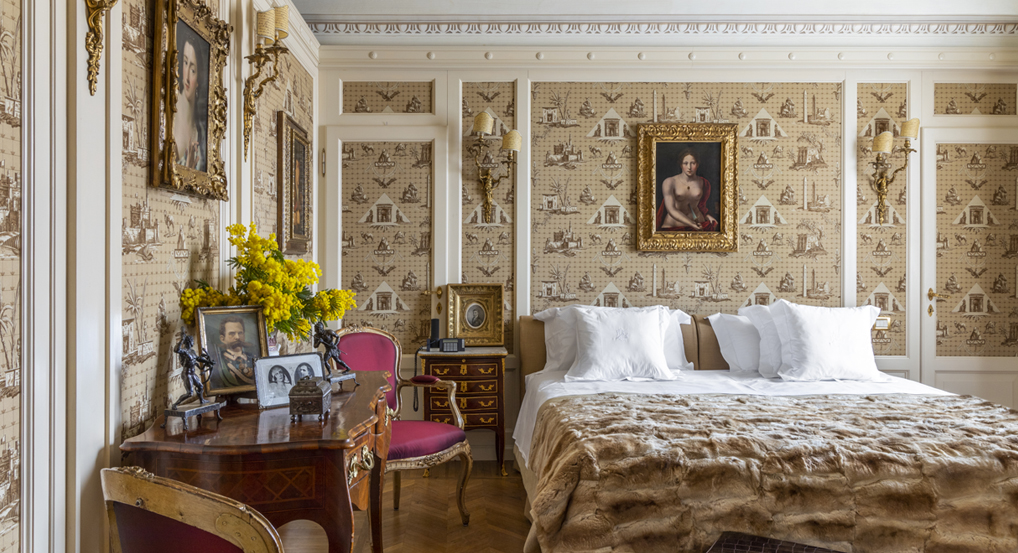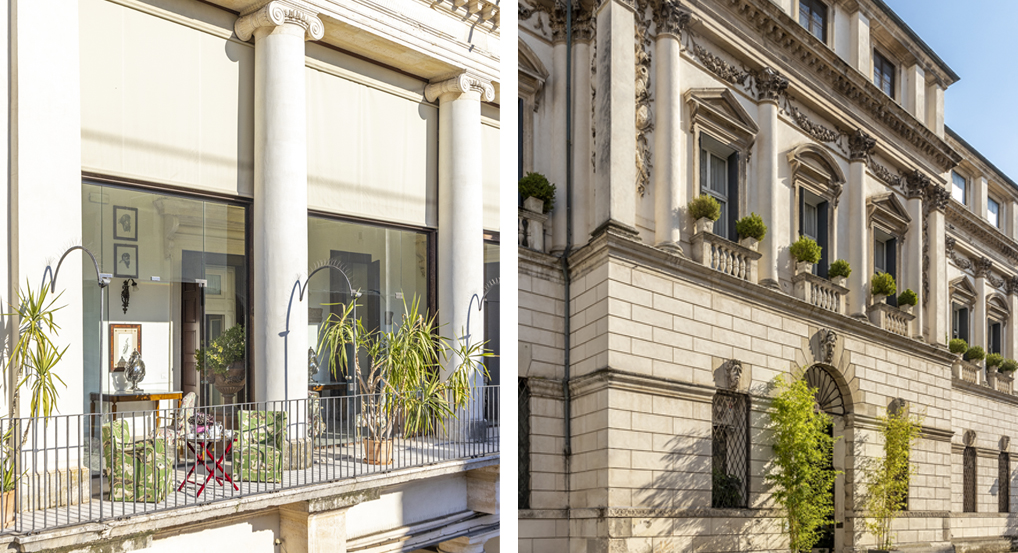Palazzo Zileri, is a spectacular fully restored apartment located in the heart of Vicenza in the main street Andrea Palladio. The eighteenth-century building in which it lies was designed by Count Ottone Maria Calderari for the brothers Alfonso and Francesco Loschi.
The ground floor exterior façade is embellished with stone masks that decorate the windows and the entrance arch, while the first floor is punctuated by pillars with Corinthian capitals and windows with alternating crowns topped with sculpted festoons of greenery. This historic building is a silent witness of important events that occurred in the city. One of these is the cannonball that hit the building in 1805 during the Franco-Austrian conflict, which since that moment has been preserved, and is clearly visible at the side of the façade!
Although the interior courtyard was never completed, during the latter part of the 1800’s the architect Antonio Caregaro Negrin designed a cave with a lovely garden, closed by a gate.
Also noteworthy are the two marble inscriptions, still visible in the atrium of the palace, which attest that Prince Umberto of Savoy and the King of Italy Vittorio Emanuele stayed in the house in 1866.
The grand entryway and staircase of stone with impressive statues and marble balustrades lead inwards and upwards and define the importance of the building.
Upon entering the first floor apartment you become keenly aware that you have entered another world. The apartment was completely restored in 2017 and is a vision of the present owner. It is also an result of what creativity, paired with Italian craftmanship can be. The space is antique but exquisitely restored and offers a comfortable atmosphere even for a modern traveler.
The two spacious living room spaces are entirely frescoed, and decorated with paintings. The first, the “Music Room”, shows Apollo in the center with a divine halo, surrounded by 8 muses. It has four comfortable armchairs, a central table and a spacious bookcase.
The Giove room, on the other hand, has two comfortable and spacious sofas, four central tables and two armchairs, from which you can admire the space. Named Jupiter with the eagle, it is adorned with zodiac signs, and great medallions depicting 4 continents. In the corners 4 elements and the 4 seasons are represented. There are decorative flowers and doves, imaginary decorations and cherubs, allegories of music, architecture and sculpture, painting, agriculture and theater offer expansive storytelling in art.
The spacious dining room, with the possibility of accommodating up to 12 people, also has a tasting corner with liqueurs and bitters available to the guest. It’s walls present two paintings crowned with laurel, inspired by a circle of large muses made with pastels.
The kitchen is fully equipped with everything you need, and has a central marble counter. The burners are gas with oven placed below. There is a pantry, new appliances, elegant cutlery, glasses, cups and plates in fine ceramic, as well as top of the line cooking equipment. Adjacent to the kitchen there is a laundry area with washing machine, dryer and iron.
A study with desk and two chairs, it is an ideal space for guests who may need privacy to work. The decoration is elegant and refined, with gold lacquered elements, and frosted glass door. It presents geometric and lively decorations of Islamic architecture, contrasted with floral motifs painted in tempura.
One level up are the two bedrooms. Impeccably designed for comfort, both are double rooms each with its own ensuite bathroom. With marble walk-in showers and restored large sinks, ornate mirrors and opulent wall décor the bathrooms are heavenly.
All rooms are equipped with air conditioning, except for the main hall due to the importance of the historical decoration. To make up for this, the owner has added a unique feature which is a large private terrace on which guests may receive breakfast or enjoy and evening drink al fresco.
Overall, this city apartment is truly a gem.

